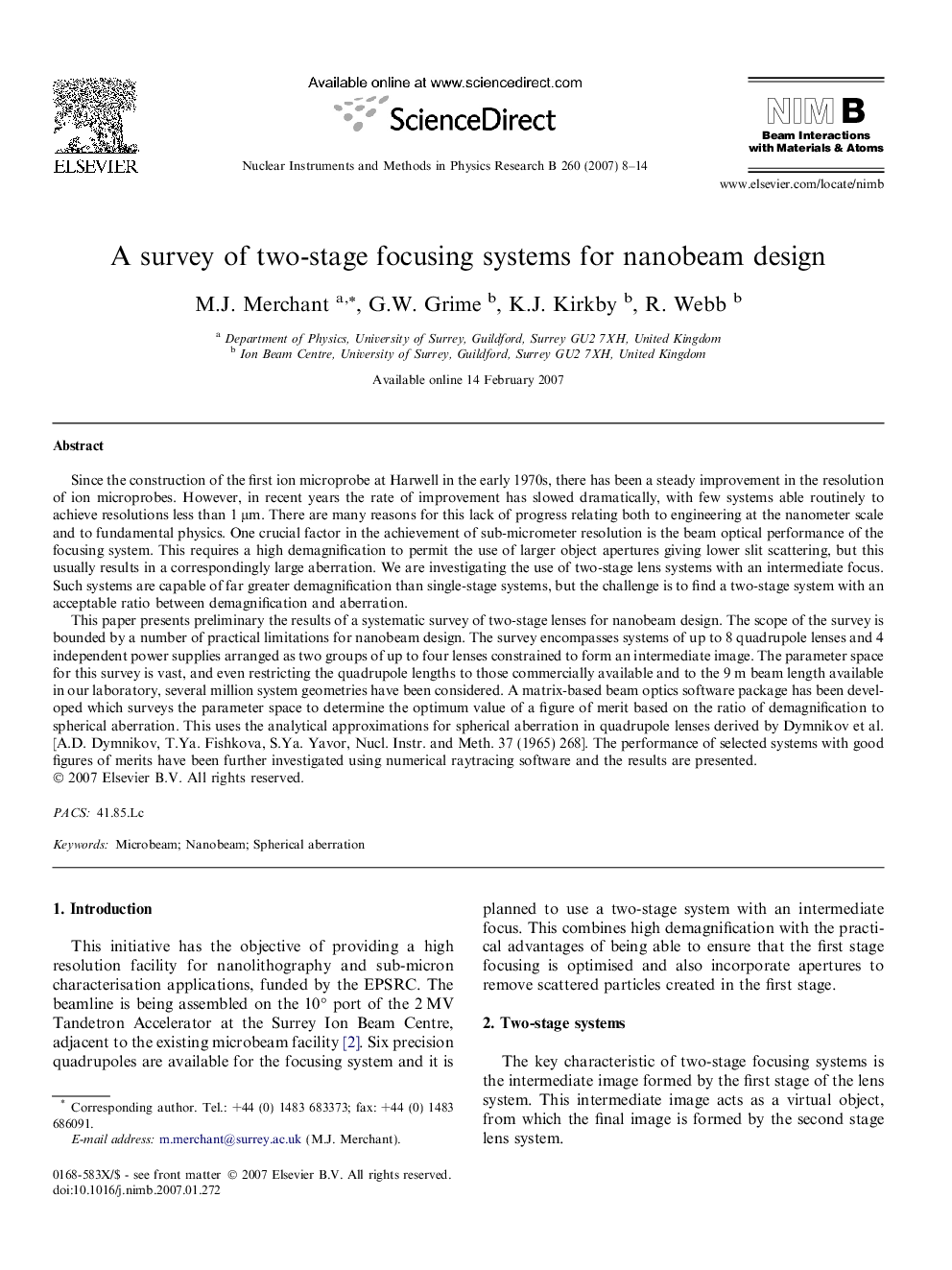| کد مقاله | کد نشریه | سال انتشار | مقاله انگلیسی | نسخه تمام متن |
|---|---|---|---|---|
| 1687717 | 1010682 | 2007 | 7 صفحه PDF | دانلود رایگان |

Since the construction of the first ion microprobe at Harwell in the early 1970s, there has been a steady improvement in the resolution of ion microprobes. However, in recent years the rate of improvement has slowed dramatically, with few systems able routinely to achieve resolutions less than 1 μm. There are many reasons for this lack of progress relating both to engineering at the nanometer scale and to fundamental physics. One crucial factor in the achievement of sub-micrometer resolution is the beam optical performance of the focusing system. This requires a high demagnification to permit the use of larger object apertures giving lower slit scattering, but this usually results in a correspondingly large aberration. We are investigating the use of two-stage lens systems with an intermediate focus. Such systems are capable of far greater demagnification than single-stage systems, but the challenge is to find a two-stage system with an acceptable ratio between demagnification and aberration.This paper presents preliminary the results of a systematic survey of two-stage lenses for nanobeam design. The scope of the survey is bounded by a number of practical limitations for nanobeam design. The survey encompasses systems of up to 8 quadrupole lenses and 4 independent power supplies arranged as two groups of up to four lenses constrained to form an intermediate image. The parameter space for this survey is vast, and even restricting the quadrupole lengths to those commercially available and to the 9 m beam length available in our laboratory, several million system geometries have been considered. A matrix-based beam optics software package has been developed which surveys the parameter space to determine the optimum value of a figure of merit based on the ratio of demagnification to spherical aberration. This uses the analytical approximations for spherical aberration in quadrupole lenses derived by Dymnikov et al. [A.D. Dymnikov, T.Ya. Fishkova, S.Ya. Yavor, Nucl. Instr. and Meth. 37 (1965) 268]. The performance of selected systems with good figures of merits have been further investigated using numerical raytracing software and the results are presented.
Journal: Nuclear Instruments and Methods in Physics Research Section B: Beam Interactions with Materials and Atoms - Volume 260, Issue 1, July 2007, Pages 8–14